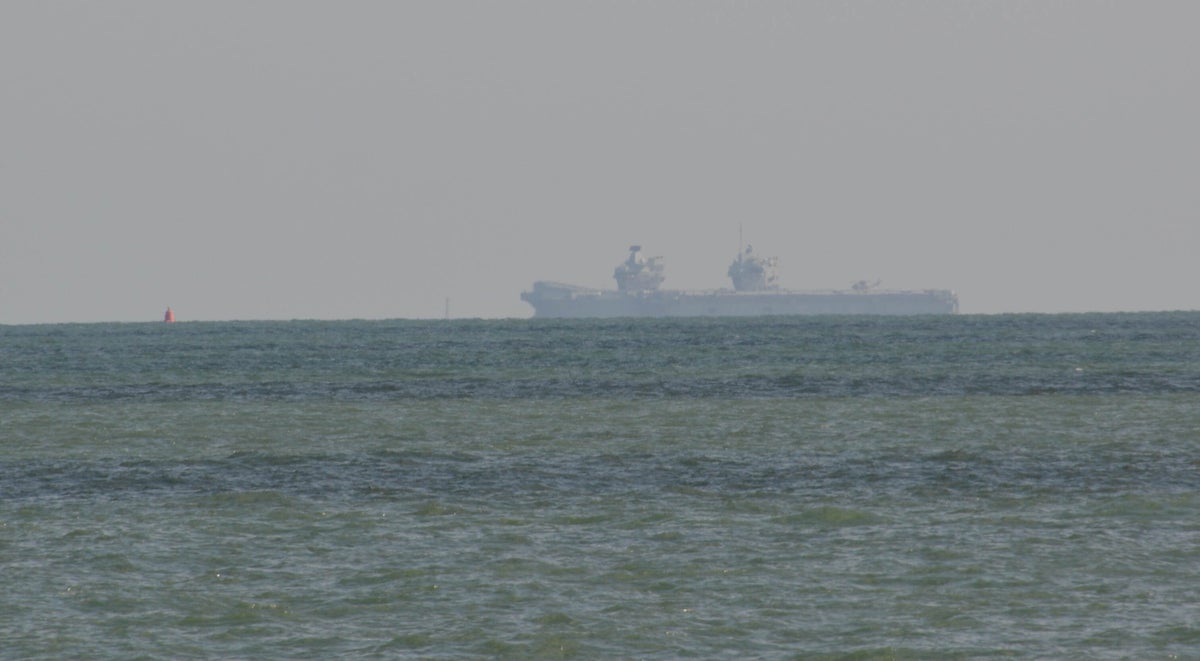
Royal Navy aircraft carrier HMS Prince of Wales is limping back closer to shore after breaking down off the Isle of Wight shortly after setting out for exercises off the US coast.
The 65,000-tonne warship left from Portsmouth Naval Base on Saturday before an “emerging mechanical issue” occurred.
The departure of the £3 billion ship had already been delayed from Friday because of a technical problem, although it is not known if the incidents are related.
Specialist website Navy Lookout said the issue was caused by damage to the starboard propeller shaft, although the Ministry of Defence has not commented on this.
The website said a photograph of the carrier leaving Portsmouth shows a wake only on the port side, suggesting a problem with the other propeller shaft.
It added that unless the problem can be resolved at sea the warship might need to go into dry dock at Rosyth, Scotland, months ahead of a planned inspection in 2023.
The carrier was moving slowly from south east of the Isle of Wight towards Stokes Bay, Gosport, on Monday afternoon where it is understood the sheltered area will make it easier for divers to examine the damage.
A Royal Navy spokeswoman said: “HMS Prince of Wales remains in the South Coast Exercise Area while conducting investigations into an emerging mechanical issue.”
The carrier had a colourful send-off as it departed on Saturday afternoon and passed thousands of music-lovers at the Victorious Festival on Southsea Common in Portsmouth.
Pop favourites Sugababes were in the middle of their set when the giant ship sailed past with the crew lining the flight deck to get a view of the festival.

The Nato flagship is sailing to undertake training exercises with the US Navy, the Royal Canadian Navy and the US Marine Corps.
The programme is expected to include exercises with the F-35B Lightning jets.
A Royal Navy spokesman said on Saturday: “HMS Prince of Wales will cross the Atlantic with her task group, ready to push the boundaries of uncrewed technology and the tactics used by the UK’s two new Queen Elizabeth-class carriers.
“Along with notable port stops in New York, Halifax in Canada and the Caribbean, the next three months will see the Prince of Wales task group work closely with US allies, operating F-35B jets and uncrewed systems which will define Royal Navy aviation of the future.
“With fleet flagship HMS Queen Elizabeth also set to deploy to the Mediterranean and Baltic this autumn at the heart of a potent Royal Navy task group, it will mean both UK aircraft carriers will be operating F-35B jets thousands of miles apart.”







